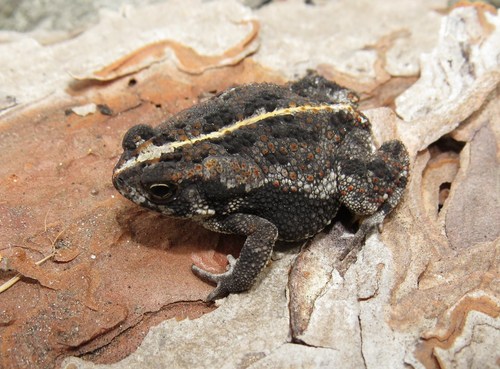
Oak Toad
The diminutive Oak Toad (Anaxyrus quercicus) thrives in southeastern U.S. scrublands. Its tiny size and distinctive high-pitched call make it a fascinating sight. Active during the day, this toad helps maintain ecological balance by preying on insects, embodying a vital link in its habitat's food web.
1.9 in
Lifespan
Length: 3 cm
Size
Grey, Black
Color
Least Concern
Conservation Status
Stable
Population Trend
Characteristics
Anaxyrus quercicus, known as the Oak Toad, is the smallest toad species in North America, averaging only 1.2 inches in length. It inhabits sandy pine flatwoods and oak scrublands in the southeastern United States. Notable for its high-pitched call and diurnal activity, it plays a role in controlling insect populations.
Distribution Range of the Oak Toad
Anaxyrus quercicus, commonly known as the Oak Toad, is native to the southeastern United States. Its geographical distribution includes states such as North Carolina, South Carolina, Georgia, Florida, Alabama, and Mississippi. The species is primarily found in coastal plain regions.
Oak Toad's Habitat
Environmental Conditions
The Oak Toad typically inhabits sandy areas with abundant leaf litter, often within pine flatwoods, oak hammocks, and mixed hardwood forests. It prefers environments with well-drained soils and is often found near temporary or seasonal wetlands, which are crucial for its breeding. The climate in its habitat is generally warm and humid, with mild winters and hot, wet summers.
Ecological Niche
Anaxyrus quercicus occupies a niche as a small, terrestrial amphibian that relies on the camouflage provided by leaf litter and sandy soils to avoid predators. It is primarily insectivorous, feeding on a variety of small invertebrates. Its breeding activities are closely tied to the presence of temporary ponds and wetlands, where it lays eggs in shallow water. The species is adapted to habitats that experience seasonal variations in water availability, which influences its reproductive cycle.
Copyright @ Nature Style Limited. All Rights Reserved.
 English
English